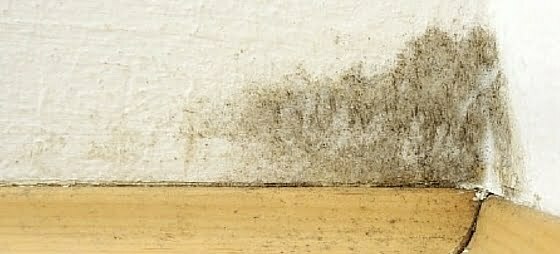Problems in the bedroom? It May Be Your Allergies

Coughing, sneezing, sniffling—if you’re an allergy sufferer, you know the drill. What’s worse is dealing with itchy, red eyes and sneezing in the bedroom, the one room in your home that should be a haven.
Did you know bedrooms can cause some of the worst exposure for allergy sufferers? It may surprise you where pesky allergens are hiding. Don’t let allergy symptoms ruin a good night’s rest. Learn more about common bedroom allergies and what you can do to avoid them.
Why the Bedroom?
The bedroom is home to a slew of allergens including dust mites, pet dander, chemicals, dust, and molds. Here you may spend 6-8 hours a day sleeping, getting ready for the day, or simply relaxing—which means you have a longer exposure to microscopic critters and particles that cause allergies and allergy-like symptoms.
Common Allergens in the Bedroom
[spacer height=”20px”]
If you suffer from allergies in the bedroom, it may be one of these three common allergens:
Dust Mites
Bedrooms are the perfect breeding ground for dust mites. Learn more about them and how to avoid them.
What are they?
Dust mites are microscopic creatures that flourish in warm, damp conditions and often take up residence in mattresses, pillows, carpets, furniture, and fabrics. Dust mites feed on the skin cells you shed, obtain warmth from your body, and extract water from your sweat or exhaled breath. These tiny critters are completely harmless, but their microscopic droppings are known for triggering allergic reactions in allergy sufferers.
What are the symptoms?
Dust mite allergies can be mild or severe in some cases. The following are a few of the major symptoms:
- Itchy or runny nose
- Congestion
- Sinus pressure
- Cough
- Scratchy throat
- Watery or red eyes
- Itchy skin
How can I avoid them?
We recommend that you wash your bed linens and dust your bedroom weekly. Minimize objects in your bedroom that collect dust such as stuffed animals or knick-knacks and protect your mattress, box spring, and pillows with special woven dust mite covers. These covers should have pores less than four microns in diameter. In extreme allergy cases, remove upholstered furniture or carpeting and replace with leather or vinyl furniture or wood, vinyl, linoleum, or tile flooring. Wash bedroom curtains on a regular basis or trade them for shades or blinds that you can wipe clean.
[spacer height=”20px”]
Animal Dander
If you have cats or dogs in the house, their dander could be affecting your allergies in the bedroom. Here’s how:
What is it?
Animal or pet dander are skin particles containing proteins that become airborne and may produce allergic reactions. It’s not animal hair that causes an allergy as many suspect, it’s the dander produced by their skin. Due to the small size (often smaller than pollen or dust mite particles) dander can remain in the air for long periods of time.
What are the symptoms?
Animal dander can cause a host of unpleasant symptoms including:
- Itchy skin
- Red, itchy eyes
- Wheezing, coughing, or sneezing
- Asthma symptoms
- Trouble breathing
- Tightness in your chest
How can I avoid it?
In extreme pet allergy situations, you may need to remove the animal from your home. To reduce your exposure to allergens in the bedroom, keep pets outdoors or away from bedrooms. Don’t allow pets to be in carpeted areas or on upholstered furniture. Vacuum the floors and furniture weekly with a HEPA filter vacuum and wash your bedroom linens each week. Wash your hands after touching your pet and give your pet a bath once a week to reduce dirt and dander.
[spacer height=”20px”]
Mold
Mold is a silent offender that creeps in and leaves a mess in its wake. Here’s what you need to know to battle mold in the bedroom:
What is it?
Mold is a form of fungus that grows on objects such as carpet, paper, drywall, insulation, wood, and food. Molds flourish in dark, warm environments with moisture accumulation due to humidity, condensation, or water leaks. Pores can develop in as few as 24-48 hours in wet, warm conditions. Large colonies of mold that are visible to the eye are made from a network of connected multicellular filaments called hyphae. As it feeds on the organism it attaches to, the nutrients cause the mold to flourish and grow.
What are the symptoms?
The following are some common mold allergy symptoms:
- Itchy, irritated eyes
- Runny nose
- Congestion
- Wheezing, coughing, or sneezing
- Scratchy throat
How can I avoid it?
The first thing you need to do is control the moisture levels in your home by fixing any plumbing, roof, or AC leaks right away. Keep your bedroom well ventilated and avoid using rugs or carpet in this space if possible—if that isn’t possible it’s imperative that you vacuum regularly and use HEPA air filters to decrease indoor mold spores (multiple times per week is best). Shut doors and windows during the rainy season and use your air conditioning to reduce indoor moisture. A dehumidifier is a great tool to decrease the relative humidity in your home to below 40%. Minimize other sources of molds in your bedroom by removing houseplants, damp clothing, aquariums, books, or damp rugs.
Are allergies getting the best of you? Contact the Board Certified Allergists at the Allergy & Asthma Specialists of North Florida to help diagnose or manage your allergy symptoms. Make an appointment to learn more today.
title image: Copyright: poligonchik / 123RF Stock Photo
dust mites: Copyright: Eraxion / 123RF Stock Photo
pet dander: Copyright: websubstance / 123RF Stock Photo
mold: Copyright: fotostudiod3x / 123RF Stock Photo




